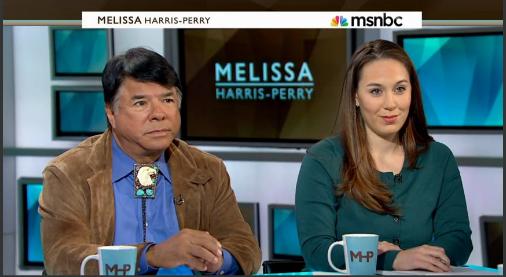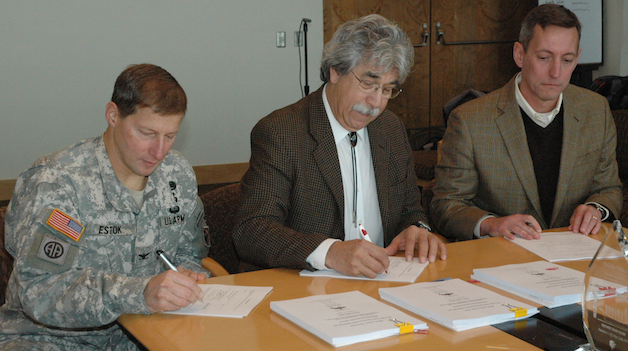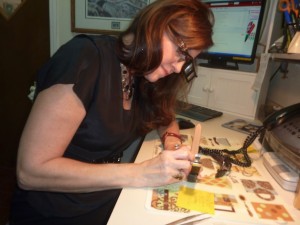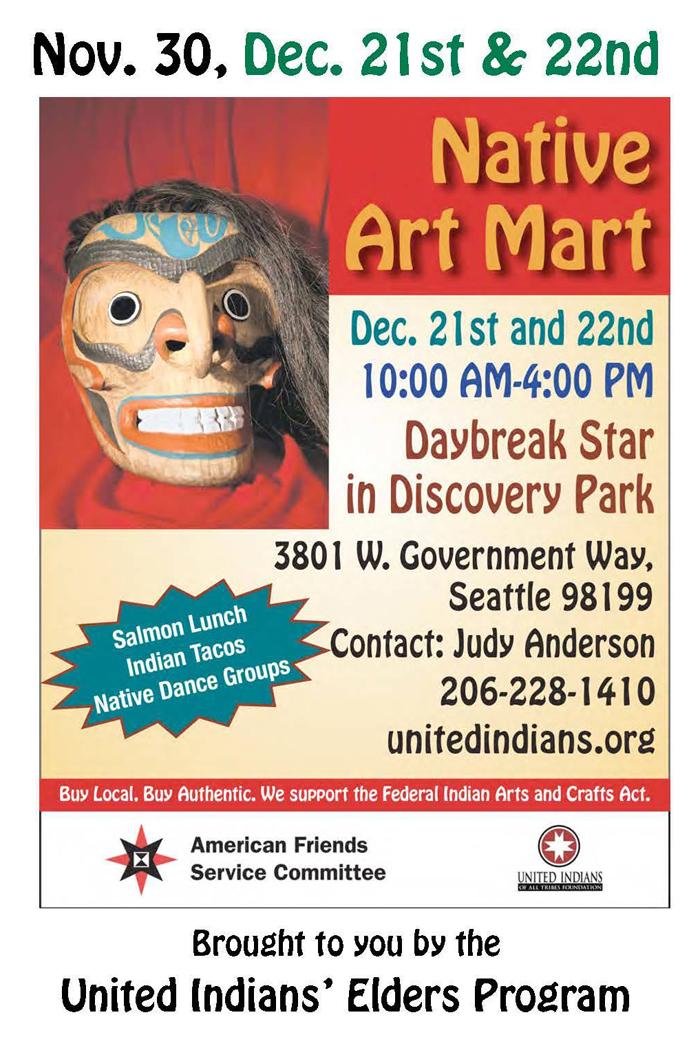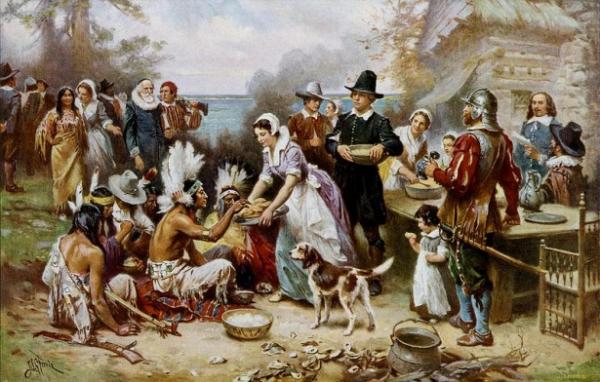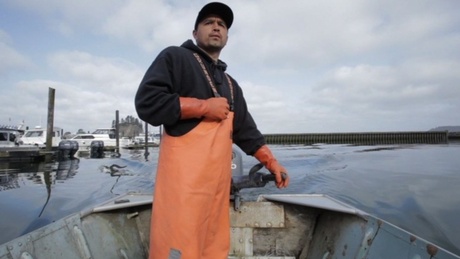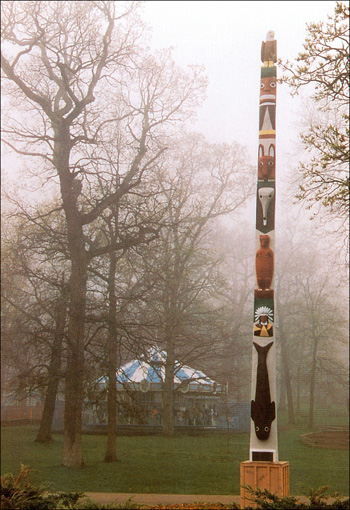Richard Walker, Indian Country Today Media Network
As the holidays kick in and people start looking ahead to the coming year, it is only fitting to acknowledge the leaders who will take Indian country into the future. Last month we brought you five Native leaders who are protecting rights, exercising sovereignty, building intercultural bridges and meeting future energy needs, among other accomplishments.
RELATED: 5 Visionaries Who See a Brighter Future for Indian Country
Now we bring five more who are rocking the world with their forward thinking, their innovation and their sense of social justice. With 29 of the 566 federally recognized indigenous nations located in what is now Washington State, the Evergreen State is a hotbed of visionary ideas.
1. Brian Cladoosby, Swinomish Tribe: Political and Environmental Leader
The Swinomish Tribe chairman and recently elected president of the National Congress of American Indians has been at the forefront of calls to study and adapt to climate change, especially in Indian Country. During his chairmanship of the Swinomish, Cladoosby developed an initiative to determine how climate change may affect coastal communities, assess the possible impacts and develop an action plan, including coastal protection measures and development code changes.
RELATED: Brian Cladoosby Is President of National Congress of American Indians
Cladoosby collaborated with the U.S. Geological Survey to launch the Canoe Journey Water Quality Project. Canoes participating in the journey carry probes that collect information on water temperature, salinity, pH levels, dissolved oxygen and turbidity in the Salish Sea. The data is used to identify and map possible sources of water quality degradation.
RELATED: Swinomish Chairman Cladoosby Honored
Under Cladoosby’s leadership the Swinomish have reclaimed lands, including environmentally sensitive lands and tidelands, lost during the allotment era or by executive order—Kiket Island in 2009, and this year more than 250 acres that had been removed from the reservation by the administration of President Ulysses S. Grant.
The Swinomish Police Department is the first tribal police department in Washington state to earn state accreditation, giving it the same authority as municipal departments to enforce state law.
“A visionary dedicated to serving the needs of his people, Brian brings together a strong focus on environmental stewardship, productive dialogue, and spiritual connectedness,” Ecotrust wrote of Cladoosby in bestowing its 2012 Indigenous Leadership Award.
RELATED: Ecotrust Indigenous Leadership Award Honors Five, Welcomes Them to Rising Leadership Network
2. Tracy Rector, Seminole/Choctaw: Taking the Art of Storytelling Digital
Tracy Rector (Photo: Lou Karsen)
Rector’s Longhouse Media is using new media to give voice to a young generation of indigenous storytellers.
Longhouse Media teaches digital filmmaking and media skills to indigenous youth to foment self-expression, cultural preservation and social change. Since 2003, Native youth have created more than 20 short films that have screened on television and in national and international film festivals.
RELATED: Seventh SuperFly Film Workshop Wraps in Seattle
Native youth worked on the award-winning feature-length documentary March Point, which chronicles the journey of two young men as they investigate the impact of oil refineries on their community. Other films explored the significance of the canoe in the Coast Salish way of life, the impacts of domestic violence, the dangers of drug abuse among young people and the importance of leading by example, the negative affects of spreading rumors, the connection between eating healthily and living healthy, and hip-hop music and dance as a way of staying sober and making healthy choices.
“We believe in Native youth telling their own stories about life, culture, and community, and understand the power of this process to change peoples’ lives,” said Rector, who was appointed this year to the City of Seattle Arts Commission, writing on her website.
RELATED: 3 Washington Native Leaders, Quinault Adviser Named to Key Positions
3. Matika Wilbur, Tulalip/Swinomish: Erasing Stereotypes, Photo by Photo
Courtesy of Matika Wilbur
Wilbur’s Project 562 is changing the way the world sees America’s First Peoples. One year into a three-year project photographing Native America, it is already spawning exhibits. Last June she participated in a prestigious TED (Technology, Entertainment, Design) conference in Seattle, speaking about “Surviving Disappearance, Re-Imagining & Humanizing Native Peoples.”
Wilbur is traveling across the U.S. by car and RV with her Mamiya film camera and Canon EOS 7D, with the mission to photograph people from every indigenous nation in America—peoples and cultures that are not only alive but also are thriving, a force in American life.
“People understand that we survived, but the stereotypes remain,” Wilbur said in an interview. She said her goal is to “build cultural bridges, abandon stereotypes, and renew and inspire our national legacy” and to reveal the enduring richness and complex variety of Native America.
“Our goal is to unveil the true essence of contemporary Native issues, the beauty of Native culture, the magnitude of tradition, and expose her vitality,” Wilbur states on her website.
RELATED: Photographer Matika Wilbur’s Three-Year, 562-Tribe Adventure
The number 562 represents the number of indigenous nations that were federally recognized when she began developing the project; there are now 566. “The number 562 is a ‘jumping-off point,’ if you will,” she said, adding that she intends to include people from non-recognized Nations as well.
The project is funded by donations generated mostly by a Kickstarter campaign. When completed, the work will comprise a book, exhibitions, lecture series, website and a curriculum.
RELATED: Video: Meet Matika Wilbur: She’s Coming to Your Nation Soon, Smile!
It’s the fourth major project by the social documentarian. Previously Wilbur photographed Coast Salish elders for the exhibit “We Are One People.” She put Native people in contemporary settings for the exhibit “We Emerge,” and photographed young Native people expressing their identities in modern ways in “Save the Indian and Kill The Man.”
Matika Wilbur: Indian Enough Photography Exhibit Opens in Ohio
4. Fawn Sharp, Quinault: Taking Tribes Global
Sharp has turned the Quinault Nation presidency into a bully pulpit on national and international issues. She has called for the seating of representatives of indigenous nations at the U.N.; doing so will foster dialogue to “eliminate violence against indigenous nations caused by rampant development which pollute lands and waters and force Indigenous Peoples out of their territories.”
RELATED: Fawn Sharp Calls for Seating of Indigenous Nations in United Nations
Sharp also called for establishment of a permanent indigenous body with authority to promote and monitor the rights of indigenous peoples; for an international conference on violence against indigenous women and children; and for U.N. members to formalize government-to-government negotiations between them and indigenous governments as a principal method for conflict resolution.
RELATED: The Quinault Nation’s New Era of International Diplomacy
The federal government’s shutdown also came in her sights.
“Those who are responsible for this mismanagement will be held to account come election time,” she vowed at the time.
Sharp is a lawyer who serves as president of the Affiliated Tribes of Northwest Indians and regional vice president of the National Congress of American Indians.
“I spent many hours away from home and from my family carefully cultivating key relationships to build a positive, strong and respectable reputation for the Quinault Indian Nation,” she wrote this year in the Quinault newspaper, The Nugguam. “Developing such political muscle has opened doors for us that otherwise would not be open, giving us the credibility we need to … protect sovereignty, protect the environment, secure funding and open international trade opportunities.”
RELATED: Fawn Sharp: Conference Appreciated but ‘We Need More’
5. Gil Calac, Paiute: Getting Veterans Their Due
Gil Calac (Photo courtesy Valerie Calac)
A Vietnam War veteran living on the Yakama Reservation, Calac’s tireless campaign is winning official recognition of, and starting the healing process for, his fellow Vietnam veterans.
When U.S. military personnel came home from Vietnam, many with injuries and memories that still haunt them decades later, there was no welcome.
“They were not treated like heroes as those who returned from Korea and World War II,” said Washington State Rep. Norm Johnson, R-Toppenish. “Instead, they were portrayed as baby killers, warmongers and other things.… That had a traumatic effect on these soldiers that is still painful to these days as many of them refuse to talk about their experiences.”
Calac’s efforts this year led to the adoption of State House Bill 1319, which establishes March 30 of every year as “Welcome Home Vietnam Veterans Day” in Washington state. The bill, introduced by Johnson and co-sponsored by 38 state House members, was unanimously approved by the House and Senate.
RELATED: Native Warrior’s Efforts Lead Washington State to Observe Annual Welcome Home Vietnam Veterans Day
Thanks to Calec, all public buildings and schools are required to fly the POW/MIA flag every March 30.
The veteran’s compelling testimony moved legislators to act quickly on the bill. At a hearing before the Senate Committee on Governmental Operations, Calac said that Welcome Home Vietnam Veterans Day would help veterans “put away our guilt, the shame, the grief and despair,” and heal from the animosity veterans faced when they returned home.
Calac hopes to see Welcome Home Vietnam Veterans Day established nationwide.
RELATED: Natives Lead All Star Cast of Veterans at MLB Midsummer Classic








